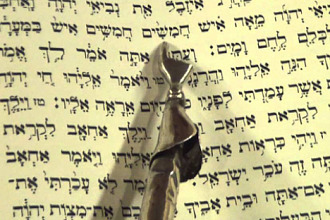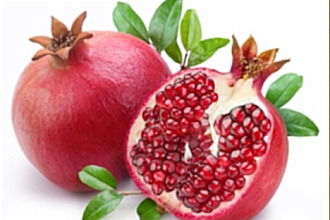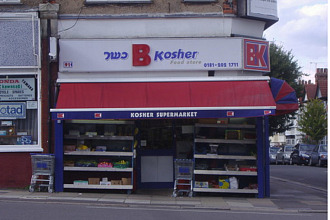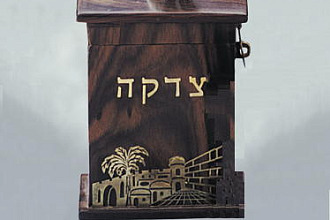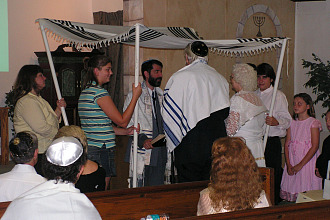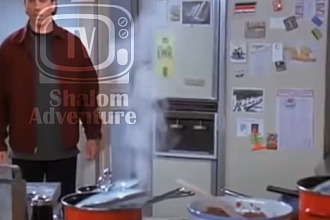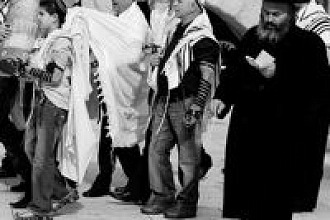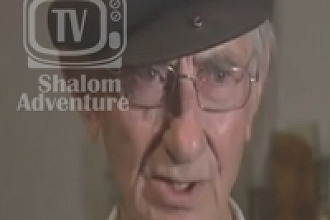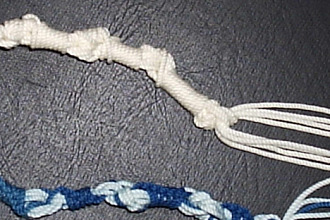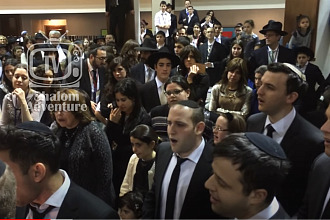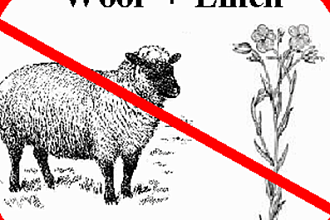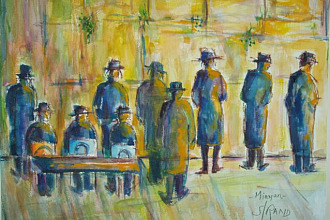T'fillin, or phylacteries, are square black boxes traditionally worn on the head and arm.
The t'fillin for the head is called t'fillin shel rosh and has four separate compartments. The t'fillin shel yod, for the arm and hand, has one compartment. Within the t'fillin are scrolls of paper that have quotes from the books of Deuteronomy and Exodus. One box is tied to the left arm and the other is tied to the forehead. This ritual of putting on t'fillin has been in existence for centuries. Usually they are worn during morning worship, but not on Sabbath or holidays. Usually only men over the age of thirteen put on t'fillin.
The Exodus portions are references to God redeeming the firstborn sons at Passover. In Deuteronomy they are references to God's Law. Thus redemption and law are bound together. In Deuteronomy chapter 6, verse 6 the Torah states that "these words which I command you today shall be in your heart." The words that God commanded were the Ten Commandments, which are recorded in the previous chapter, chapter 5. Although the text is referring to the Ten Commandments, it is not the Ten Commandments of Deuteronomy chapter 5 that are in the t'fillin nor the references to the Passover redemption, but rather the instructions about t'fillin that are in the t'fillin.
The text in Deut. 6:6 says that these commandments need to be in our hearts. In other words, we should love them. They should become a part of our lifeblood. The text continues in verse 8 stating, "Bind them as a sign on your hand and let them serve as a symbol on your forehead." This needs to be understood in the same way as when it said "in your heart." God wants our hands to be active in doing His work and deeds. He wants our hands following His law. He does not want them stealing or cheating, He wants them helping and uplifting. In reference to God, Psalm 48:11 says, "Your right hand is filled with beneficence." And in reference to King David, Psalm 18:21 states, "The Lord rewarded me according to my merit; He requited the cleanness of my hands." Thus, it is not a physical manifestation of writing them on our hands that God is referring to, but rather, as with the heart, a figurative application.
The same would be true with the reference to having them as a symbol on our forehead. He wants His law to guide our thinking. It is interesting to note that the area of the brain at the forehead is the frontal lobe. This is the area of our brain where we make decisions. Adonai not only wants us to be doing good things, but He wants us to choose to do these things. There is a wonderful promise written by the Jewish prophet Jeremiah in chapter 31, verse 33 in the book in the Hebrew Scriptures named after him. It states, "Says the Lord: I will put My law in their minds and write it on their hearts..." NKJV. God Himself will write His laws into our minds! God will help us make the right choice if we allow Him to rule our lives.
Elohim is telling us to write the laws on our hearts – love them. Write them on our hands – do them. Write them on our forehead – think about them, decide to do them, want to do them. God wants our minds, our hearts, and our hands to be under His direction.
It is interesting that in the book of Revelation the Bible refers to the mark of the beast being placed on the hands and forehead. While the seal of God is having God's law figuratively written on our heart, hands, and foreheads, the mark of the beast will be the using of hands or foreheads to break God's law. The essence of the mark of the beast is choosing with the mind to disobey God's law and then breaking His law with actions or inactions. Just as the writing of God's commandments on our hearts, hands, and heads is figurative, so also the mark of the beast is not a literal marking on the outside of bodies but a figurative writing on the hands and foreheads by choosing to disobey God and to follow the little horn/beast institution's man-made laws.
Originally from: Jewish Discoveries pages 265-267, by Jeff Zaremsky, which contains a total of 22 fascinating chapters of biblical history and lessons plus 25 rich Jewish tradition sections, and 27 powerful testimonies, with over 40 beautifully rendered professional works of art all on over 300 jam packed pages. You can own this treasure by visiting www.Jewishheritage.net
Picture: by Yoavlemmer
Posted on Shalom Adventure by: B Ellen Gurien








